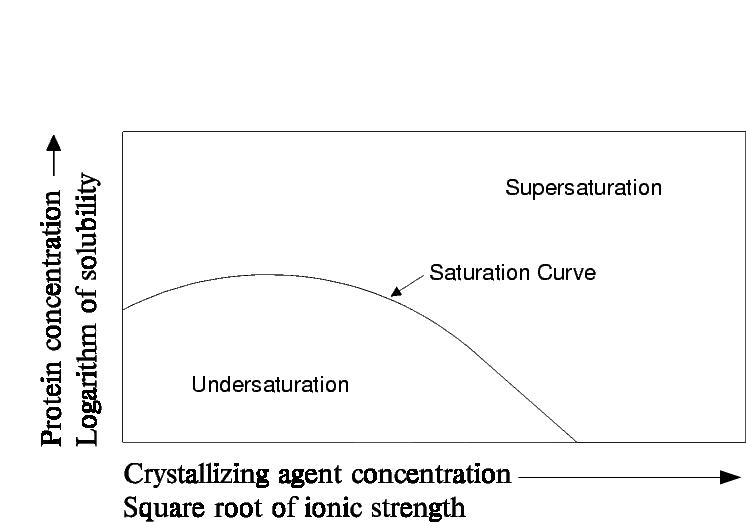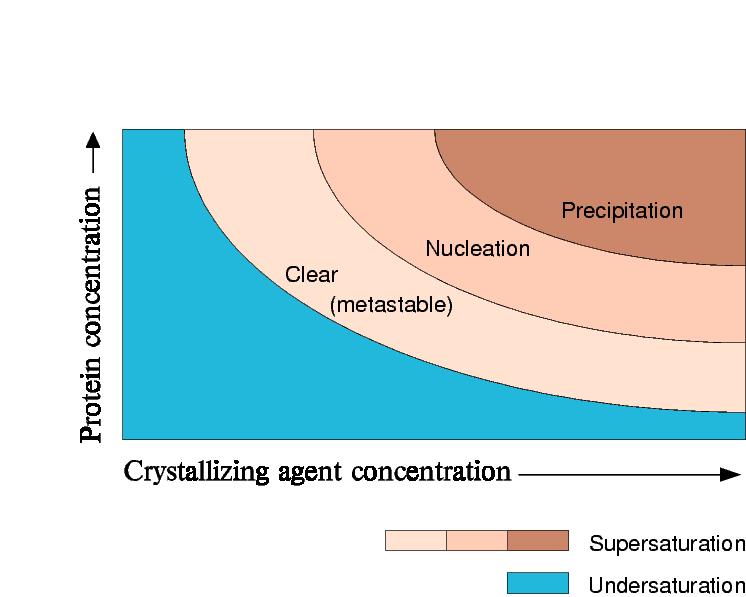The solubility of proteins can
be represented in phase diagrams.
The phase diagram plots the solubility curve of a protein.
-
the horizonal axis shows the parameter being varied (usually precipitant
concentration)
-
the vertical axis shows the protein concentration.
 Phase
Diagram for a typical protein
Phase
Diagram for a typical protein
-
Saturation occurs
when the rate of loss and gain of both the solid and solution phases of
the protein are equal, and the system is in equilibrium.
-
Salting-out is seen on the right hand
side of the diagram where there is a reduction in protein solubility as
the concentration of salt increases.
-
Salting-in is seen on the left hand
side of the diagram where there is an increase in protein solubility as
the concentration of salt increases.
There is an energy
barrier to crystallization
How can the protein become supersaturated?
Why doesn't the protein immediately precipitate or crystallise as soon
as saturation is achieved?
Because in order for a protein to crystallize it must overcome an energy
barrier analogous to that for conventional chemical reactions.
 Energy Diagram for Crystallization
Energy Diagram for Crystallization
-
The critical nucleus corresponds to the higher energy intermediate.
-
The higher the energy barrier, the slower the rate of nucleation.
The probability
of nucleation increases with increasing supersaturation
The more supersaturated the protein solution,
-
the greater the likelihood that a critical nucleus will form
-
the smaller the nucleus needed to induce crystal formation
This can be represented on a phase diagram by dividing the supersaturated
zone into regions of increasing probability of nucleation and precipitation.
 Phase Diagram showing zones for crystal nucleation, growth
and precipitation.
Phase Diagram showing zones for crystal nucleation, growth
and precipitation.
© 1999-2005 Airlie J McCoy,
University of Cambridge. All rights reserved.
Last updated:
7 June, 2005
 Energy Diagram for Crystallization
Energy Diagram for Crystallization
 Phase
Diagram for a typical protein
Phase
Diagram for a typical protein
 Energy Diagram for Crystallization
Energy Diagram for Crystallization
 Phase Diagram showing zones for crystal nucleation, growth
and precipitation.
Phase Diagram showing zones for crystal nucleation, growth
and precipitation.